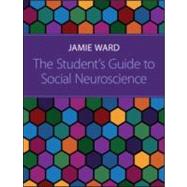The Student's Guide to Social Neuroscience

The Student's Guide to Social Neuroscience
- ISBN 13:
9781848720053
- ISBN 10:
184872005X
- Format: Nonspecific Binding
- Copyright: 11/07/2011
- Publisher: Psychology Pres
Rent
Sorry, this item is currently unavailable.
Note: Supplemental materials are not guaranteed with Rental or Used book purchases.
Extend or Purchase Your Rental at Any Time
Need to keep your rental past your due date? At any time before your due date you can extend or purchase your rental through your account.
Summary
Social Neuroscience is a rapidly expanding field which attempts to explain our ability to recognize, understand, and interact with other people in terms of the workings of the brain. Concepts such as trust, revenge, empathy, prejudice and love are now being explored and unraveled by the methods of neuroscience.#xE3;#xAC;#xAC; Many researchers believe that evolutionary expansion of the primate and human brain was driven by the need to deal with social complexity: not only to understand and outwit our peers, but to take advantage of the benefits of cooperative living. But what kind of brain-based mechanisms did we end up with #xE2;#xAC;#x1C; special routines for dealing with social problems or more general solutions that can be used for non-social cognition too? How are we able to sacrifice our own self-interests to respond to the needs of others? How do cultural differences in the organization of society shape individual minds (and brains), and does the brain provide constraints on the possible range of cultural permutations? The Student#xE2;#xAC;"s Guide to Social Neuroscienceexplores and explains these big issues, using accessible examples from contemporary research.#xE3;#xAC;#xAC; The first book of its kind, this engaging and cutting-edge text is an ideal introduction to the methods and concepts of Social Neuroscience for undergraduate and postgraduate students in fields such as psychology and neuroscience. Each chapter is richly illustrated in attractive full-color with figures, boxes and #xE2;#xAC;#xDC;real-world#xE2;#xAC;" implications of research. Several pedagogical features help students engage with the material, including essay questions; summary and key points; further reading; and a website with glossary, practice multiple-choice questions and active reference links. Supplementary teaching resources are also available online - these and the student resources are available free of charge to qualifying adopters.






